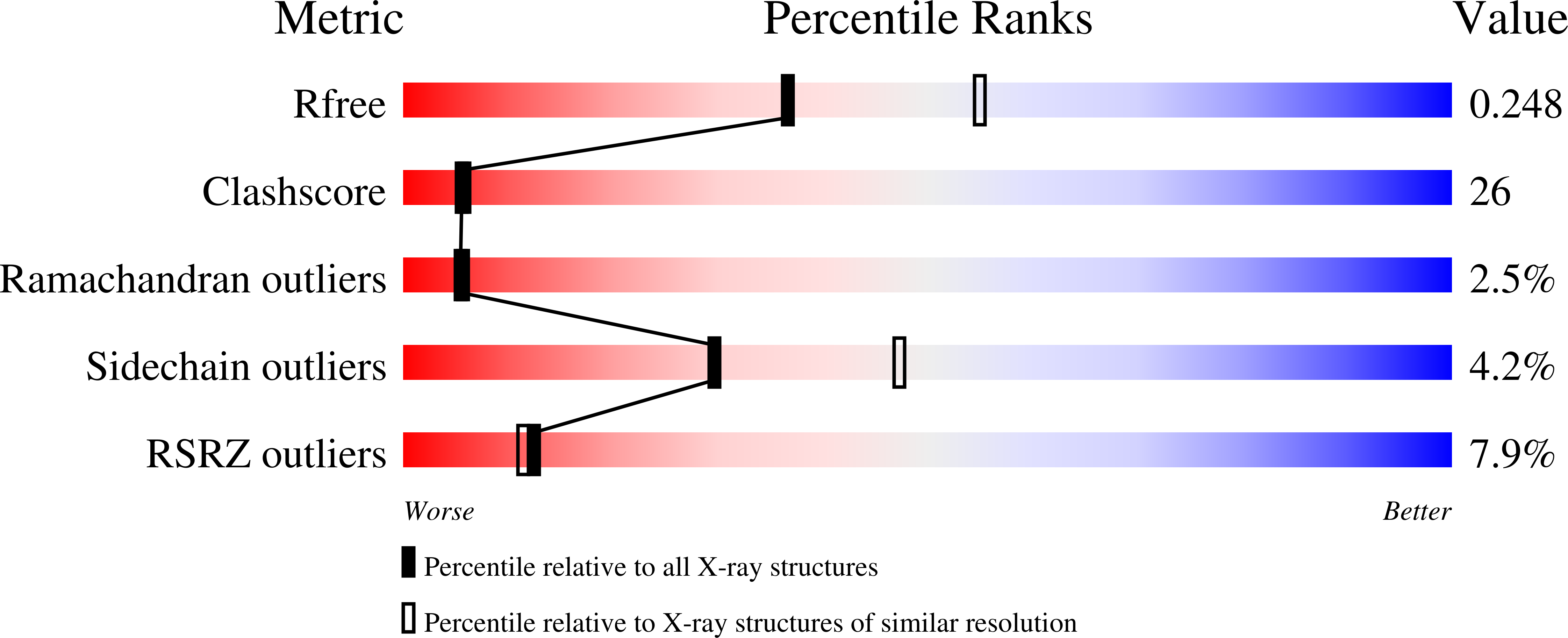Crystal structure of an ATPase-active form of Rad51 homolog from Methanococcus voltae. Insights into potassium dependence
Wu, Y., Qian, X., He, Y., Moya, I.A., Luo, Y.(2005) J Biol Chem 280: 722-728
- PubMed: 15537659
- DOI: https://doi.org/10.1074/jbc.M411093200
- Primary Citation of Related Structures:
1XU4 - PubMed Abstract:
Homologous gene recombination is crucial for the repair of DNA. A superfamily of recombinases facilitate a central strand exchange reaction in the repair process. This reaction is initiated by coating single-stranded DNA (ssDNA) with recombinases in the presence of ATP and Mg(2+) co-factors to form helical nucleoprotein filaments with elevated ATPase and strand invasion activities. At the amino acid sequence level, archaeal RadA and Rad51 and eukaryal Rad51 and meiosis-specific DMC1 form a closely related group of recombinases distinct from bacterial RecA. Unlike the extensively studied Escherichia coli RecA (EcRecA), increasing evidences on yeast and human recombinases imply that their optimal activities are dependent on the presence of a monovalent cation, particularly potassium. Here we present the finding that archaeal RadA from Methanococcus voltae (MvRadA) is a stringent potassium-dependent ATPase, and the crystal structure of this protein in complex with the non-hydrolyzable ATP analog adenosine 5'-(beta,gamma-iminotriphosphate), Mg(2+), and K(+) at 2.4 A resolution. Potassium triggered an in situ conformational change in the ssDNA-binding L2 region concerted with incorporation of two potassium ions at the ATPase site in the RadA crystals preformed in K(+)-free medium. Both potassium ions were observed in contact with the gamma-phosphate of the ATP analog, implying a direct role by the monovalent cations in stimulating the ATPase activity. Cross-talk between the ATPase site and the ssDNA-binding L2 region visualized in the MvRadA structure provides an explanation to the co-factor-induced allosteric effect on RecA-like recombinases.
Organizational Affiliation:
Department of Biochemistry, University of Saskatchewan, Saskatoon, Saskatchewan S7N 5E5, Canada.



















